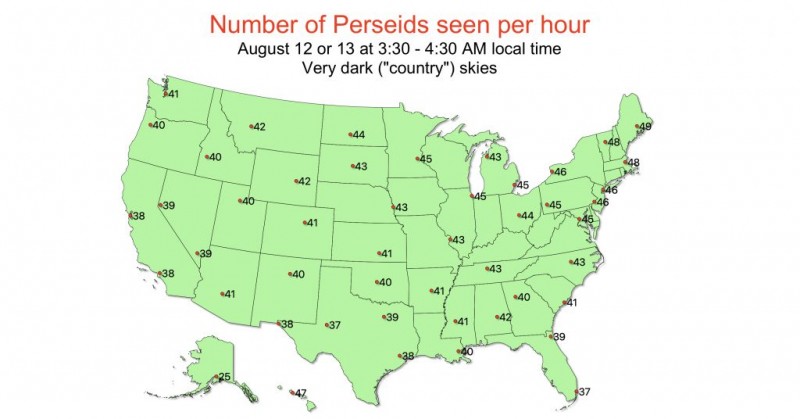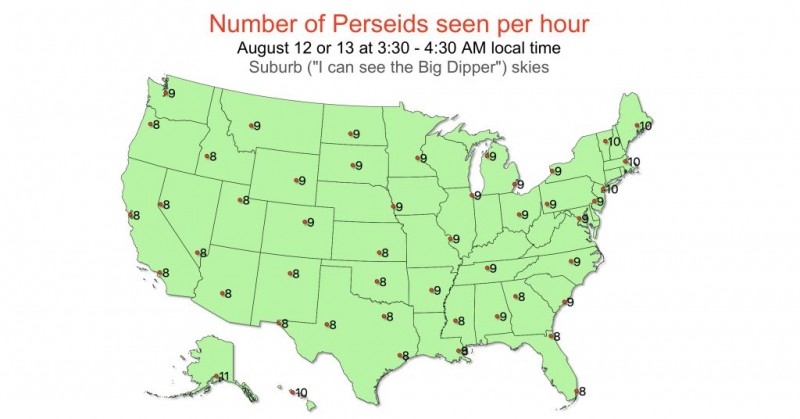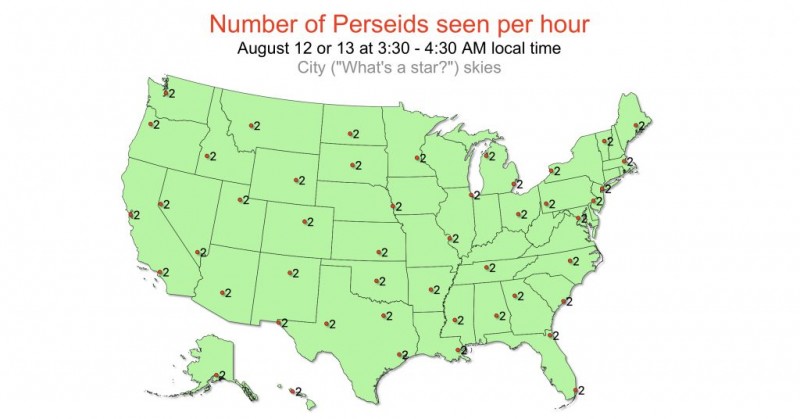
Many Perseid-related news stories and social media posts state that the maximum rate is about 100 meteors per hour, which is a lot. So, folks get excited and go out on the peak night, braving mosquitos and other nightly hazards. But they are often disappointed; we routinely hear, “I went out and only saw a few meteors. Not even 20, much less 100!” And they would be right. The problem is that the 100 per hour is a theoretical number used by meteor scientists and does not convey what people are actually going to see.
In the 1980’s, meteor researchers were searching for a way to compare the meteor shower rates observed by various individuals and groups across the globe. People were reporting the rates, but the differences in sky conditions, radiant altitude and observer eyesight made getting a comprehensive view of shower activity difficult.
So, the meteor researchers put their heads together and came up with the concept of a ZHR, or Zenithal Hourly Rate. The ZHR is what you get after you correct the observed rates for the sky conditions, the altitude of the radiant above the horizon and observer biases. In other words, it is basically what a perfect observer would see under perfect skies with the meteor shower radiant straight overhead – which never happens!
The often-quoted ZHRs overestimate the meteor rates people actually see – sometimes by a lot. Fortunately, we can take the ZHR and invert things to get the hourly rates for certain locations and circumstances – it’s only math, after all. We have done this for select locations in the United States, producing the following maps.
These maps show the hourly rates that can be expected on the night of the Perseid shower’s peak, provided there are no clouds in the sky. (It’s hard to account for partial cloud cover.)
These rates assume you are out in the country, where lots of stars and the Milky Way are visible and no clouds, of course:

So, instead of 100 Perseids per hour, people in the U.S. can reasonably expect to see around 40-ish Perseids in the hour just before dawn on the peak nights. That’s about one every couple of minutes – not bad. However, we are assuming you are out in the country, well away from cities and suburbs.
What rates can you expect if you want to do your Perseid watching from the neighborhood? We also computed that:

The brighter skies of the suburbs greatly cut down the rates. We have gone from a Perseid every couple of minutes to one every 6-7 minutes – a factor of three reduction. This explains the great disappointment expressed by many casual Perseid watchers; they go outside, expecting to see at least a meteor a minute and end up with 10 or less in an hour. The brightness of your sky is everything in meteor observing – you have to get away from the lights!
But what about those in cities? The rates are close to zero:

Ugh! City dwellers might see a Perseid or two in an hour. Not very inspiring. Perhaps the only good news is that, if someone in a city sees a Perseid, it has to be really, really bright and spectacular.
Want to see Perseids? Then head out into the dark – it’s worth it!
Source: nasa.gov
